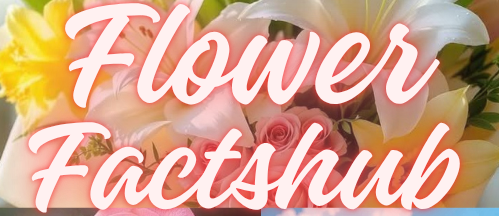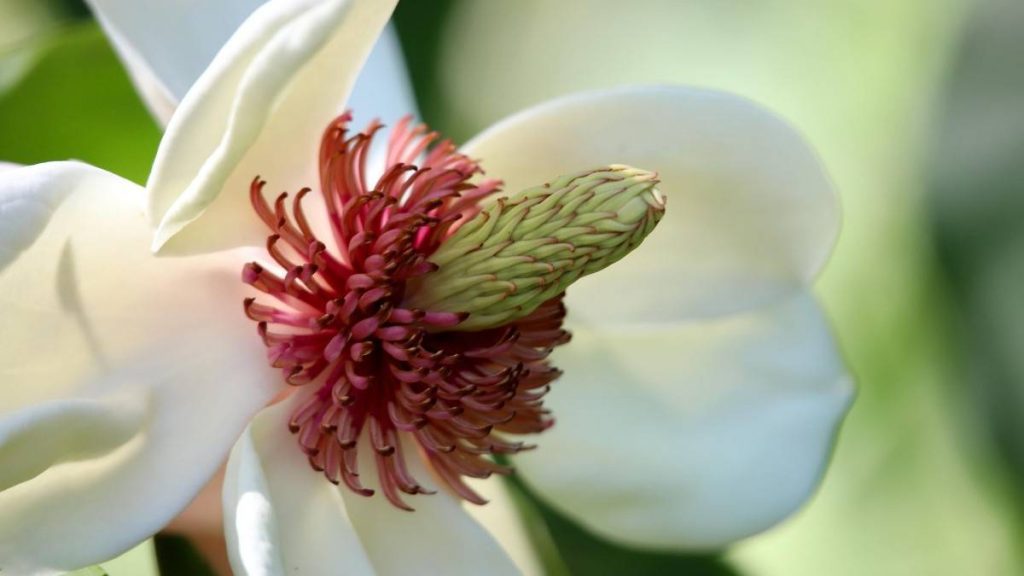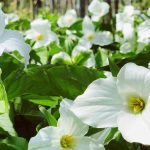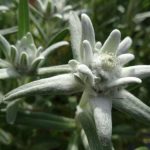Magnolia flowers have long enchanted gardeners, nature lovers, and artists alike with their timeless beauty and rich symbolism. These elegant blooms, often appearing as early signs of spring, bring more than just color to a landscape they carry a legacy. With over 200 species found across Asia and the Americas, magnolias are known for their stunning, fragrant blossoms, ranging from creamy whites to deep purples. Their large, showy petals and bold presence in gardens make them unforgettable wherever they bloom.
But magnolia flowers aren’t just about looks. These blooms hold cultural, historical, and even spiritual meanings for many around the world. Whether symbolizing endurance, feminine strength, or love for nature, magnolias are more than just flowers they are expressions of life’s delicate power. In this article, we’ll explore the magic behind the magnolia’s bloom, revealing why these flowers continue to inspire wonder across generations and continents.
History
The story of magnolia flowers begins long before humans walked the Earth. In fact, fossil records show that magnolias existed over 100 million years ago, making them one of the oldest flowering plants on the planet. They bloomed even before bees evolved, which is why magnolias developed a tough, leathery structure to attract beetles an ancient pollination strategy that still works today. That resilience, preserved over millennia, is part of what gives magnolias their timeless charm.
From Asia to the Americas, these flowers have captivated cultures with their rich symbolism and striking beauty. In China, magnolias represent purity and feminine strength. In the southern United States, their broad, creamy blooms are a symbol of hospitality and grace. Their blossoms whether snow-white, blush pink, or deep purple open with an elegance that feels both primal and poetic, whispering stories of ancient Earth and untouched forests. Each time a magnolia blooms, it’s as if nature is reminding us of the world’s quiet beginnings unchanged and undisturbed.
Having grown magnolias in my own garden for years, I can say there’s something deeply grounding about their presence. Their blooms aren’t just visually breathtaking they carry with them a kind of earth-born wisdom that no other flower quite delivers. Watching them unfold each spring feels like witnessing the Earth remember itself.
Their Role in Prehistoric Ecosystems
Magnolia flowers are more than just ancient they were essential players in the prehistoric ecosystems that shaped our modern world. Thriving in warm, temperate climates during the Cretaceous period, magnolias coexisted with dinosaurs and evolved before the rise of pollinating bees. Instead, their survival relied on beetle pollination, a trait they still carry today. This adaptation speaks volumes about the ecological intelligence of the plant, showcasing its ability to work with the earliest insect life on Earth.
In those prehistoric landscapes, magnolias helped balance ecosystems by supporting early insect populations and stabilizing the environment with their broad canopies and deep roots. Their dense foliage provided shelter, their flowers offered a food source, and their presence helped control soil erosion long before human cultivation. As early forests took shape, magnolias were among the foundational species not just surviving, but actively shaping the bio diverse world that would follow.
What fascinates me as a gardener and nature enthusiast is how these flowers, though now beloved for their elegance, were once hardy survivors of Earth’s rawest ages. When I see a magnolia tree in full bloom today, I don’t just see a beautiful plant I see a living remnant of the Earth’s first great floral expressions, still quietly thriving in our gardens and parks.

How They’ve Survived Through the Ages
The survival of magnolia flowers through countless centuries is a true testament to nature’s quiet brilliance. Originating over 95 million years ago, these blooms have endured ice ages, continental drift, and the rise and fall of entire ecosystems yet they remain largely unchanged in form. What makes this flower so remarkably resilient is its biological simplicity combined with evolutionary intelligence.
Magnolias were among the first flowering plants, and their leathery leaves, woody seed pods, and thick, durable petals are all signs of an early design built to last. Unlike delicate flowers that depend on fragile ecological conditions, magnolias thrive in various climates and soils. Their ancient partnership with beetles, rather than bees or butterflies, helped them reproduce even before modern pollinators had evolved. That’s a survival tactic rooted not in luck, but in smart adaptation.
Even in today’s rapidly changing climate, I’ve seen magnolias display an astonishing ability to adapt. In my own experience nurturing these trees, I’ve noticed that once established, they rarely fall prey to disease or harsh winters. Their deep roots anchor them not just to the ground but to time itself, connecting us to a living history that continues to bloom in our very backyards.
The Symbolism & Cultural Significance of Magnolias
Magnolias are more than just botanical wonders; they are symbols rooted deep in culture, emotion, and human storytelling. Across continents and centuries, these blooms have spoken in the language of the soul each petal whispering messages of love, strength, beauty, and spirit.
In Victorian floriography, a time when flowers were used to express emotions that couldn’t be spoken aloud, magnolias stood for love and purity. Their bold, clean blossoms symbolized noble character and refined emotions, often gifted in courtship or to mark deep respect. Even today, a magnolia in full bloom carries an air of quiet sincerity a floral gesture of the heart.
In the American South, magnolias have become a symbol of resilience and endurance. Their roots run as deep as Southern traditions, thriving through hurricanes, heat, and history. It’s not just their beauty that defines them here, but their grit standing tall and proud season after season, much like the people and stories of the region. I still remember walking down a quiet lane in Savannah, Georgia, where ancient magnolia trees cast shadows over brick pathways living monuments to generations past.
Magnolias also hold a special place in the world of art, literature, and film, often used as metaphors for femininity, grace, and natural beauty. Their curving petals and striking form have inspired everything from classical paintings to modern fashion editorials. You may recall their poignant presence in films like Steel Magnolias, where they represent the delicate balance between vulnerability and inner strength.
In Eastern traditions, especially in China and Japan, magnolias carry deep spiritual meaning. They are symbols of harmony, dignity, and awakening. In traditional Chinese medicine and Taoist teachings, the magnolia is seen as a bridge between the physical and spiritual realms, often planted near temples or used in rituals to promote peace and clarity of mind.
Every culture that embraces the magnolia seems to see something of itself in the flower. That’s the real magic it adapts, endures, and blooms, always carrying meaning that feels deeply personal.
The Science Behind the Bloom: How Magnolias Thrive
Magnolias stay not only stunning they’re scientific marvels, designed by nature over millions of years to suffer, evolve, and enchant. Behind every bloom lies a fascinating story of survival and adaptation, starting with something that surprises most people: beetles, not bees, are their original pollinators.
You see, magnolias evolved long before bees ever buzzed through flowers. As one of the oldest flowering plants on Earth, their early companions were beetles. These prehistoric insects are less delicate than bees, so magnolias developed thick, leathery petals almost waxy to the touch to withstand the beetles’ weight and rough movements. This isn’t just a quirk of design; it’s a calculated defense. The waxy coating also protects against moisture loss and fungal infections, especially in humid or rainy environments.
Another incredible trait is their climate adaptability. From the swampy lowlands of Louisiana to the snowy hills of East Asia, magnolias have learned to thrive in varied environments. Some varieties, like the Magnolia stellata, are cold-hardy and bloom early in spring, while others, like Magnolia grandiflora, prefer warmth and display their flowers through summer. Their roots grow deep and wide, anchoring them firmly against strong winds and droughts.
This combination of ancient pollination partnerships, climate versatility, and tough, protective petals makes magnolias one of nature’s best examples of elegant resilience. As a gardener and lifelong plant enthusiast, I’ve seen how well magnolias adjust even in tricky urban soils or shifting weather patterns proving that beauty and toughness can grow hand in hand.
Growing Your Own Magnolia: Tips for a Stunning Bloom
There’s something deeply rewarding about growing your own magnolia watching those buds slowly unfurl into fragrant, dramatic blooms feels almost like witnessing a miracle. But to truly unlock their magic in your own garden, you need to give them the right foundation.
Magnolias love well-drained, slightly acidic soil. They don’t like soggy roots, so raised beds or slopes are ideal. A generous layer of mulch will help keep moisture in and weeds out. As for light, most magnolias prefer full sun to partial shade, especially during the blooming season. However, if you live in a very hot climate, a bit of afternoon shade can prevent scorching.
Choosing the right variety is also key some magnolias are deciduous, others evergreen; some thrive in cold zones, while others are better for warmer regions. For example, Magnolia stellata does well in cooler climates, while Magnolia grandiflora loves the southern heat. Take time to match the tree to your zone for best results.
Once planted, magnolias don’t need aggressive pruning. In fact, it’s best to let them develop naturally. Prune only to remove dead or damaged branches, and do so right after flowering to avoid cutting off next year’s buds. A magnolia’s slow, steady growth rewards patience with long-term beauty.
Of course, like all plants, magnolias have their challenges. Late frost is the biggest enemy especially to early bloomers, whose flowers can turn brown overnight. Planting in a sheltered spot and avoiding early-pruning can help protect those tender buds. Pests like scale insects or aphids occasionally appear, but a mild soap spray or horticultural oil usually keeps them at bay.
Growing a magnolia may not offer instant gratification, but if you nurture it with care and patience, it will thank you with a display that feels almost otherworldly season after season.
Magnolias Beyond the Garden: Their Uses in Beauty & Wellness
The magic of magnolias extends far beyond their captivating appearance in gardens and parks they’ve also found a cherished place in the worlds of beauty, wellness, and healing. Their influence quietly weaves through perfumes, herbal remedies, and even modern self-care rituals.
In perfumery, magnolia is a prized ingredient. Its luxurious, floral scent strikes a perfect balance light yet sensual, fresh yet creamy. It adds elegance and softness to high-end fragrances, often used as a heart note that lingers gracefully on the skin. Brands seeking to capture timeless femininity and subtle power frequently turn to magnolia to evoke both charm and confidence.
But the use of magnolia isn’t just about scent it has deep roots in traditional healing. For centuries, magnolia bark and flowers have been used in Chinese and Japanese herbal medicine. They were believed to reduce inflammation, calm anxiety, and support digestion. Today, modern research has begun to validate some of these age-old uses, particularly for compounds, which have shown promise in easing stress and promoting relaxation.
One of the most accessible ways people enjoy magnolia’s benefits today is through essential oils. Extracted carefully from the flowers, magnolia essential oil is celebrated for its calming properties. Just a few drops in a diffuser or blended into a massage oil can create a peaceful atmosphere that melts away tension. It’s not just the fragrance it’s the way it feels, like a soft exhale for the soul.
In this way, the magnolia continues to work its gentle magic, proving it’s not just a feast for the eyes but a balm for the senses rooted in history, embraced in beauty, and trusted in wellness.
Magnolias in Art & Pop Culture: A Timeless Muse
The elegance and emotional power of magnolia flowers have long inspired artists, writers, musicians, and designers across generations. Their large, expressive blooms are more than just botanical wonders they are symbols of beauty, sensuality, and strength that have taken root in the creative world.
In the realm of fine art, Georgia O’Keeffe stands out with her iconic magnolia paintings. Known for her close-up floral compositions, O’Keeffe captured the essence of magnolias with bold strokes and soft curves, portraying their quiet power and intimate delicacy. Her work helped redefine how flowers, especially magnolias, could express emotion, depth, and even femininity on canvas.
Magnolias have also bloomed in songs, poems, and films, often carrying deep symbolic weight. The 1989 film Steel Magnolias used the flower as a metaphor for Southern women graceful, strong, and resilient. Countless poets have drawn upon magnolia imagery to express themes of fleeting beauty, love, and longing. Musicians, too, have referenced magnolias in lyrics to evoke romance, nostalgia, and nature’s quiet wisdom.
In the world of fashion and design, magnolias have become timeless motifs. From runway prints to home décor, their lush forms are used to represent luxury, softness, and natural beauty. Designers love the balance they strike elegant yet wild, delicate yet bold. Whether woven into silk scarves or featured in modern wallpaper patterns, magnolias effortlessly blend vintage charm with contemporary flair.
Their presence across so many artistic mediums proves one thing clearly: magnolias aren’t just flowers. They’re muses, breathing inspiration into every brushstroke, lyric, and design they touch.
Conclusion: The Eternal Magic of Magnolias
There’s a reason magnolias continue to stir something deep in our hearts they are living poems. With roots that stretch back millions of years and blooms that embody both strength and serenity, magnolias remind us that true beauty doesn’t shout it simply stands, season after season, blooming with grace.
Whether you’re drawn to their ancient story, their role in art and culture, or simply their elegant charm, one thing is certain: magnolias invite us to slow down and take notice. To watch a magnolia bloom is to witness resilience in motion. It’s a moment of calm in a noisy world.
So perhaps now is the time to plant a magnolia in your garden, or just pause under its shade and admire. Let its presence fill you with wonder, peace, and quiet power.
Frequently Asked Questions (FAQs)
Q1. When do magnolia flowers usually bloom?
Magnolia blooms vary by species, but most bloom in early to mid-spring, with some varieties blooming in summer. The flowers often appear before the leaves fully open.
Q2. Do magnolia trees need full sun or partial shade?
Magnolias prefer full sun to partial shade. For the best flowering and growth, choose a sunny location with well-draining soil.
Q3. Are magnolia flowers fragrant?
Yes! Many varieties, especially southern magnolias, have a sweet, lemony fragrance that makes them popular in gardens and perfumes.
Q4. Can I grow a magnolia tree in a small garden?
Absolutely. There are dwarf or compact varieties of magnolias, like Magnolia stellata (Star Magnolia), perfect for smaller spaces or container planting.
Q5. Why are magnolia petals so thick and waxy?
Their thick, waxy petals help them survive harsh climates and protect against early spring frost. This is also why they’ve lasted since prehistoric times!
Q6. How long do magnolia flowers last?
Magnolia blooms typically last 2 to 4 weeks, depending on the variety and weather conditions. Frost or heavy rain can shorten the blooming period.
Q7. Do magnolias attract pollinators?
Yes, but instead of bees, magnolias are pollinated by beetles, a throwback to their ancient evolutionary history before bees existed.
Q8. What are some common problems when growing magnolias?
Watch for scale insects, leaf spot, and frost damage. Providing the right soil, pruning gently, and protecting from harsh cold can help.
Q9. Can magnolia flowers be used for anything besides decoration?
Yes! Magnolia bark and essential oils are used in traditional medicine and relaxation products, and their flowers inspire perfumes and skincare.
Q10. Is there a symbolic meaning to magnolias?
Magnolias symbolize purity, dignity, femininity, and strength in various cultures from Victorian floriography to Southern American resilience and Eastern spirituality.



